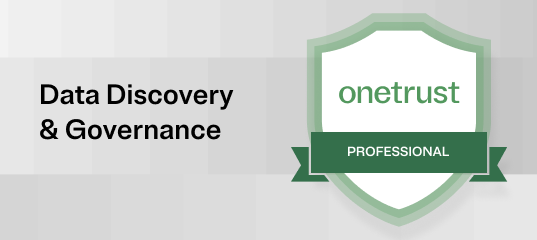Today, environmental, social, and governance (ESG) practices occupy a significant share of the conversation about corporate performance. Regulators, stock exchanges, investor funds, and trade groups are rapidly issuing new ESG frameworks and requirements. In addition, consumers and asset managers worldwide are signaling continued strong interest in ESG investing. In 2021, ESG assets grew to $37.8 trillion globally, a 66% increase over 2016. By 2025, Bloomberg projects this will reach $53 trillion.
The “G” in ESG (governance) focuses on how an organization governs itself – the controls, processes, and roles by which a company operates, makes decisions, and meets the needs of its stakeholders. This includes the board’s capacity to oversee environmental and social risks and opportunities related to the company’s performance and impact.
Today’s boards of directors must fulfill the needs of diverse stakeholders who are looking for robust evidence of ethical and sustainable corporate behavior. This needs to start with the composition of the board and the directors’ proven ability to lead through ESG-driven change.
Preparing for the future with good governance
Building a strong board is the first step toward good governance. Tracking the diversity and skills of your board will help you evolve your approach to governance. Resilient governance is also essential for identifying and acting on the most significant risks and opportunities for your business.
This guide will explore what’s driving ESG governance, why board diversity and skills matter, and actions you can take to comply with changing regulations and meet stakeholder expectations. We’ll help you structure your approach by examining the following questions:
- What must companies report about board diversity and skills?
- What are common reporting frameworks and standards?
- How should companies disclose board diversity and skills as part of their ESG program?
What’s driving ESG governance?
Regulations and reporting standards
Keeping up with rapidly emerging ESG regulations and reporting standards is an ongoing challenge. There are more than 2,700 climate laws and policies and 2,200 ESG reporting provisions that can affect the way companies disclose sustainability matters. Numerous policies have also been enacted around the world covering societal issues such as forced labor, discrimination, and human rights. And while one consistent global ESG reporting standard could materialize in the future, it doesn’t yet exist.
Despite the fragmented nature of ESG reporting requirements, companies are investing in tracking their efforts in response to both internal and external pressure. It’s a beneficial practice to adopt. These metrics enable business leaders to go beyond compliance, examine their progress toward strategic goals, and course-correct where needed.
Make sure your organization can comply with the Corporate Sustainability Reporting Directive (CSRD). Register for OneTrust’s CSRD Masterclass webinar series today.
Institutional investors pushing change through proxy voting
Institutional investors are becoming more focused on ESG matters, including board diversity and tenure, and this is reflected in their proxy voting agendas. For example:
- State Street Global Advisors is calling for proof of board and workforce diversity.
- Proxy advisors ISS and Glass Lewis issued proxy voting guidelines on issues including board diversity, director nomination process, board tenure, board skills, and ESG oversight.
These institutions are scrutinizing company disclosures, and will vote against board and committee nominations that fail to support relevant ESG regulations, standards, and best practices.
Rising shareholder activism
Shareholder activism for ESG issues is also on the rise. In a 2021 keynote address, SEC Commissioner Allison Herren Lee cited at least a half-dozen unique cases of shareholder proposals that enacted (or nearly enacted) comprehensive climate, social, or governance reforms. For example:
- 98% of General Electric shareholders voted to create a pathway to net-zero emissions.
- 65% of United Airlines shareholders voted for a resolution seeking information around corporate lobbying efforts related to Paris Agreement objectives.
- 58% of ConocoPhillips shareholders voted to reduce Scope 3 emissions.
Emboldened by recent successes, shareholders continue to plan and launch campaigns to hold companies accountable for their ESG impacts. In one case, activist hedge fund Engine No. 1 was able to select four new members to the board of ExxonMobil despite owning only 0.02% of the company. These new board members will prioritize climate solutions such as renewable energy initiatives to replace current company practices.
Addressing this rapidly changing landscape of stakeholder expectations will require boards to have diverse perspectives and the right experience.
Why board diversity and skills matter
Diverse boards lead to better performance
The benefits of board diversity are well-documented.
Board diversity is a strong indicator of good governance, often leading to positive financial growth. As a case in point, a global survey of 1,700 companies indicated that those with above-average diversity rates in management positions had 19% more innovation revenue.
Companies with diverse boards also tend to have stronger diversity and inclusion programs, which can contribute to better market performance. For example, EY found that organizations with high-performing diversity and inclusion programs were 45% more likely to improve their market share and 70% more likely to have success in a new market.
Time and time again, research has proven that the diversity of a board directly impacts the efficacy of its decision-making and the probability of its success. Despite this fact, many boards do not meet the diversity targets set by various global legislative and trade bodies. A study of Russell 3000 Index companies (which included over 400 S&P 500 companies) found that women only held 19% of director seats and that minority groups (all combined) only held 10%. Clearly, more focus is needed to close the gap.
Boards need the right expertise to manage ESG risks and opportunities
To effectively lead through the dramatic changes that stakeholders expect, board directors need to have the right skills, including relevant expertise in managing ESG issues. This isn’t just good ESG governance — it’s a common-sense approach to corporate governance as a whole.
Unfortunately, many boards lack demonstrable proficiencies in ESG skills. According to a study of 1,188 Fortune 100 directors, only 6% have environmental (E) or governance (G) proficiency. And, while the rates were slightly higher for social credentials (29%), the gap is still significant. This lack of ESG experience on boards is impacting the bottom line and raising investor concerns. For example, one insurer with no environmental expertise on its board lost $100 billion in damages caused by climate change.
From an investor’s perspective, board skills have a direct correlation to performance. If a board doesn’t evolve with the market, it probably has little visibility into current risks and opportunities. Regulators charged with maintaining confidence in markets also want to make sure that boards have the right skills to overcome business challenges and capitalize on opportunities. More recently, investors and regulators have sought to better understand how board expertise in ESG issues, including cybersecurity, plays a role in business strategy and risk management.
Reporting requirements for board diversity and skills
Reporting requirements around board diversity and skills are constantly evolving in jurisdictions around the globe. To keep up, companies must be proactive. This includes monitoring developments and developing workflows that reflect the most up-to-date requirements by jurisdiction.
Since regulations are highly dispersed and often unique, reporting efforts can be complex. Working with the right tools to streamline board reporting operations is critical. The following list outlines notable legislation and reporting requirements surrounding board diversity and skills disclosure and, where applicable, the steps and timelines to comply with them.
What must companies report about board diversity?
US national requirements
In 2021, the Securities and Exchange Commission (SEC) approved Nasdaq’s rules on board diversity, which are the first of its kind to be implemented nationwide. Applicable Nasdaq-listed companies must develop annual disclosures about their board’s voluntary self-identified gender, race, and LGBTQ+ characteristics. The rules call for having at least two “diverse” board members including at least one who self-identifies as female and one who self-identifies as a minority or LGBTQ+.
To help ensure a standardized, consistent approach for disclosed data, Nasdaq requires companies to report the information in a board diversity matrix or a substantially similar format. The new rules include a “comply or explain” requirement: If a company doesn’t adhere to the specified ratios of diverse directors, they must issue a statement explaining how and why they’ve missed the mark, and how they plan to remedy the situation.
The compliance period began in 2022 and extends through 2023 for diversity objectives.
US state-level requirements
California: Starting in 2021, state law requires all eligible boards with principal executive offices located in California to meet a minimum ratio of diverse board members (female directors and directors from underrepresented groups). The required minimums increase in direct proportion to company and board size.
Companies that fail to meet the requirements could face penalties up to $100,000 for the first offense and $300,000 for subsequent offenses, but compliance is still mixed. Only half of the impacted companies (358) fulfilled their reporting obligations in 2021. Of those, 48% (172) violated gender diversity requirements at the time of filing and 16% (57) violated underrepresented group diversity requirements.
Illinois: Starting in 2021, state law requires publicly held corporations with principal executive offices located in Illinois to report the number of women and minority board members, the board nomination process, and policies in place to support diversity, equity, and inclusion in the board.
Maryland: House Bill 1210, enacted in 2021, requires specified companies in the state to demonstrate diversity in their board or support for underrepresented communities in their mission to qualify for state grants, tax credits or contracts worth more than $1 million.
New York: The Women on Corporate Boards Study Act requires companies authorized to do business in the state to report their board composition, including the number of directors and how many are women. The initial study found that 26.04% of board members in the second half of 2020 were women. In 2021, the number decreased to 25.57%.
Washington: A section was added to the Washington Business Corporation Act (WBCA) requiring public companies to have a gender-diverse board by January 1, 2022 – at least 25% of the board must self-identify as female. Companies that do not meet this requirement must publish a board diversity analysis detailing how they will meet it in the future. If companies fail to publish the analysis, any shareholder entitled to vote in the election of directors can request the superior court to order the company to provide the information.
According to Harvard and Compliance Week, there are seven other US states that have passed or are considering legislation to enhance board diversity: Colorado, Hawaii, Massachusetts, Michigan, New Jersey, Ohio, and Pennsylvania.
Canada requirements
Since 2014, Canada has required certain companies to report on the gender diversity of their board. In 2020, new disclosure requirements were added for minorities, Aboriginals, and the disabled.
Europe requirements
Europe leads the world in gender parity on boards. The Gender Diversity Index 2021, which surveyed 668 European companies, found that 35% of board members are women. By comparison, the global rate is 19.7% for all publicly listed companies.
In 2022, the European Parliament announced an agreement on a draft bill that would require at least 40% of non-executive director posts or 33% of all director posts to be occupied by the under-represented gender by June 30, 2026. Penalties for failing to comply may include fines or even having board selections annulled by a judicial body.
Make sure your organization can comply with the Corporate Sustainability Reporting Directive (CSRD). Register for OneTrust’s CSRD Masterclass webinar series today.
UK requirements
The UK has implemented amendments to existing rules that would subject UK-listed companies to new board diversity targets and reporting requirements. The targets are for at least 40% of the board to be women, at least one senior board position to be held by a woman, and at least one board member to be from a non-white ethnic background. As the Nasdaq regulations mentioned earlier, the new UK rules include a comply or explain provision.
The requirements apply to accounting periods beginning in April 2022. This means that the first annual reports to include the new disclosures will be released in Q2 2023.
Even without these new rules to encourage them, UK companies have made tremendous progress when it comes to closing the gender gap in board positions. In 2022, almost 40% of board positions for UK FTSE 100 companies were held by women, up from only 12.5% in 2012. This places the country second in the world for women’s representation on boards.
What must companies report about board skills, including ESG?
Compared to board diversity, there are relatively few pieces of legislation that lay out specific requirements and penalties around board skills disclosure. This may change in the near future, but savvy organizations are not waiting for legislators to force their hands. Glass Lewis reports that about 75% of S&P 500 companies included some form of director skills disclosure in their proxy statements in 2021, up from only 66% the previous year.
Companies are proactively disclosing board skills information because they recognize it’s a simple way to increase investor confidence and ultimately drive better financial results. Institutional investors such as Vanguard and the New York City Pension Fund have also specifically requested it, a clear indicator of how valuable shareholders perceive these disclosures to be.
The section below summarizes a few of the recommendations and best practices that businesses can follow to drive the most value with their board skills reporting.
US requirements
2022 marked the 20th anniversary of the Sarbanes-Oxley Act (SOX), the first federal legislation to include specific requirements around board composition. The legislation was intended to shore up confidence in US capital markets in the aftermath of several high-profile corporate scandals. Hearings in the leadup to the new legislation confirmed that weak corporate governance, including a lack of applicable expertise among directors, was partially to blame for the scandals.
In addition to requiring certain practices in corporate financial reporting, SOX also required disclosure of board financial expertise. Specifically, it required public company audit committees to confirm they have an independent director who is also a financial expert.
In 2009, the SEC approved an amendment to the Securities Act of 1933, instituting rules to enhance disclosure around risk, compensation, and corporate governance. The amendment included a requirement for US public companies to disclose the “experience, qualifications, attributes or skills” that led them to nominate each individual director.
In 2022, the SEC proposed further amendments to the Securities Act of 1933 and the Securities Act of 1934 that would enhance and standardize climate-related disclosure requirements. One proposed rule would require companies to disclose whether their board of directors has expertise in climate-related risks, “with disclosure in sufficient detail to fully describe the nature of the expertise.”
Australia requirements
The Australian Securities Exchange (ASX) Corporate Governance Council (CGC) includes board composition disclosure recommendations in its Corporate Governance Principles and Recommendations, most recently published in 2019.
Specifically, Recommendation 2.2 says that entities listed on the ASX should “have and disclose a board skills matrix setting out the mix of skills that the board currently has or is looking to achieve in its membership.” The document states that a skills matrix can provide useful information for investors and increase the accountability of the board. According to Glass Lewis, the clarity of this recommendation and the rationale provided have helped make Australia a global leader in disclosure of board composition information.
The CGC also encourages companies to refer to the recommendations of the Task Force on Climate-related Financial Disclosures (TCFD) to determine if they have any material exposure to climate change risk. If they do, the companies should make any disclosures recommended by the TCFD, which would include governance-related disclosures.
Europe requirements
The European Commission’s guidelines on non-financial reporting, originally published in 2017 and last updated in 2019, includes a section with guidance on how large listed companies should prepare the description of their board diversity policy to be included in their corporate governance statement. In addition to more traditional diversity criteria, the guidelines encourage companies to disclose whether they have a diversity of views and expertise on their boards. The guidelines specify that this should include expertise in relevant sustainability matters.
The European Commission also published a supplement to the guidelines that focuses specifically on reporting climate-related information. The supplement states that a company should disclose whether it (and its board and management in particular) “has access to expertise on climate-related issues, either from its own internal capacity and/or from external sources.”
Most recently, the European Union Corporate Sustainability Reporting Directive (CSRD), which was approved in 2022, defines more precise requirements around ESG reporting. This includes a requirement stating that businesses must report on the role that the board plays in sustainability matters, and “their expertise and skills in relation to fulfilling that role.” The CSRD is expected to take effect for reporting year 2024, with the first submissions due in 2025.
Make sure your organization can comply with the Corporate Sustainability Reporting Directive (CSRD). Register for OneTrust’s CSRD Masterclass webinar series today.
UK recommendations and guidelines
The UK Corporate Governance Code, most recently updated in 2018, provides principles of good corporate governance. One principle included in the code is that “the board and its committees should have a combination of skills, experience and knowledge.”
All companies with a premium listing on the London Stock Exchange, whether incorporated in the UK or elsewhere, are required to make a statement on how they have applied the principles outlined in the Corporate Governance Code, thus allowing potential investors to evaluate the company’s approach to governance. Therefore, compliance with the code would require reporting on the skills of the board, and how those skills help support the goals of the business.
Reporting frameworks and standards
ESRS
As part of the CSRD requirements approved in 2022, the European Financial Reporting Advisory Group released a new reporting framework: the European Sustainability Reporting Standards (ESRS). The framework includes 12 standards that are categorized into four areas: Environmental, Social, Governance, and Cross-cutting.
ESRS 2, which covers general disclosures, includes specific requirements around board diversity and competencies relevant to the business. These reporting requirements will be enforced as part of the CSRD.
Make sure your organization can comply with the Corporate Sustainability Reporting Directive (CSRD). Register for OneTrust’s CSRD Masterclass webinar series today.
GRI
The Global Reporting Initiative (GRI) framework provides resources to support effective sustainability reporting. Companies must explain their governance practices as part of their general disclosures, which gives GRI essential context for organizational decision-making and policies. More than 10,000 companies worldwide use GRI standards to guide them in their ESG reporting.
Specifically, GRI Disclosure 102-24 covers how reporting organizations nominate and select their highest governance bodies. The disclosure instructs organizations to include information about whether and how they consider diversity in their selection criteria, and whether and how they consider expertise and experience related to economic, environmental, and social topics.
SASB
The Sustainability Accounting Standards Board (SASB) is a nonprofit founded in 2011 to help bridge the “value gap” between the information that’s typically included in traditional financial statements and the ESG factors that are increasingly important to understanding a company’s long-term ability to create business value.
SASB standards are unique among ESG reporting frameworks: instead of providing general guidance, they provide specific guidance for each of 77 different industry verticals. This helps companies understand which ESG issues are most likely to be financially material for their own industry. With this focus on the issues that matter most to the bottom line, it’s no wonder SASB standards have strong support from leading global investors. According to the SASB, 327 institutional investors—representing $82 trillion in assets under management across 28 markets—support SASB standards and/or use them to inform their investment decision-making.
The governance metrics included in the SASB standards are likely to differ between the different industries, in recognition of the fact that each industry has its own unique governance profile. As such, SASB standards include different performance metrics that are likely to serve as indicators of governance quality within the specific industries that they cover.
TCFD
As previously mentioned, the Task Force on Climate-related Financial Disclosures (TCFD) issues recommendations to help corporations improve their transparency around climate risk. This improved transparency can help establish greater investor confidence. Companies often do TCFD reporting on a voluntary basis; however, reporting based on TCFD recommendations is also mandatory in many countries, including the US, Canada, and the UK.
From a governance perspective, TCFD recommends that companies disclose what role the board plays in overseeing climate-related risks and opportunities. Logically, this would include describing what skills and experiences directors have that make them qualified to serve in that capacity.
WEF Stakeholder Capitalism Metrics
The World Economic Forum (WEF) Stakeholder Capitalism Metrics were created with the goal of providing a recommended set of universal ESG metrics and disclosures. Starting in 2020, more than 200 companies, investors, organizations, and regulators worked together to examine existing ESG frameworks (including GRI, SASB, and TCFD) and identify only the metrics that are most critical to driving sustainable value creation. These essential metrics became the basis for the WEF Stakeholder Capitalism Metrics.
The metrics and disclosures are organized into four pillars, one of which is the Principles of Governance. One metric within this pillar covers governance body composition. This metric encourages companies to report on the skills and diversity of their governing bodies, in addition to other criteria related to board composition.
How to disclose board diversity and skills
As we’ve seen, there are several clear factors driving companies to disclose information around board diversity and skills:
- Complying with regulations from various jurisdictions around the world
- Demonstrating good governance to increase investor confidence
- Showing an understanding of ESG issues essential to create business value over the long term
However, the question of how to disclose this information is less clear. In this section, we’ll examine some of the factors you should consider when formatting your board diversity and skills reporting.
1. Understand the requirements
In order to understand how you should be formatting your disclosures, start by looking at what your obligations might be across every jurisdiction in which you do business. From there, you can drill down to look at the specific guidance that may be included in the regulations and frameworks that apply to your organization.
Part of the challenge for companies is that many of the regulations mentioned above focus primarily on what information should be disclosed, and not how it should be disclosed. However, there are a few exceptions. As mentioned above, the Nasdaq requirements that were approved by the SEC in 2021 specifically require companies to provide board diversity information in a matrix or substantially similar format.
Requiring a standardized format is intended to ensure consistency, and thus make it easier for investors to see how a particular company may compare to other companies or to the industry average for diversity metrics. See below for an example of the board diversity matrix required by Nasdaq.
Among the regulations and guidelines related to board skills reporting, the ASX Corporate Governance Principles and Recommendations are unique because they specify that companies should disclose information using a board skills matrix. The recommendations point out that in addition to providing investors with vital information, a skills matrix can also help companies identify gaps in their directors’ competencies and help with succession planning.
2. Consider your options
Although not all regulations explicitly require it, using a matrix format to report board diversity and skills information is ideal, for the simple reason that it allows regulators and investors to see and interpret a lot of information quickly. This may help explain why skills matrices are catching on quickly: over 50% of S&P 500 companies provided them in 2021, up from only 41% in 2020.
Companies must also consider whether to disclose diversity and skills information on an individual or aggregate basis. Disclosing on an individual basis provides more granular information that stakeholders may find particularly helpful, and it’s also a good way to highlight the directors with a particularly strong skillset.
However, the purpose of skills disclosure is not to highlight the shortcomings of individual directors; in cases where there is a skills gap, reporting on an aggregate basis may be more appropriate. In 2021, about 48% of S&P 500 companies disclosed race and ethnicity data of directors on an aggregate basis, while 25% did so on an individual basis.
Finally, companies can choose between traditional reporting—focusing on their board as it currently stands—or reporting the ideal future state they are working toward, and what gaps they must fill in order to get there. Companies that are already in compliance with diversity quotas and have a good mix of skills on their board will likely want to emphasize that fact in their reporting. In contrast, companies that are currently falling short will likely want to show regulators and investors that they recognize the problem, and have a plan to fix it.
3. Know your audience
As with any reporting requirement, the disclosures you make about board diversity and skills will be read by regulators and investors alike. We’ve already talked about the expectations regulators have—both in terms of content and formatting—but it may also be helpful to consider how your investors will use the information you disclose, and formulate your disclosure accordingly.
Spend some time assessing what kinds of information matter most to your investors. Then, consider how you can format your diversity and skill matrices in a way that makes that information as easy as possible for them to find and consume.
4. Don’t wait to act
Although regulations around board diversity and skills disclosure are growing more numerous and complex all the time, creating detailed diversity and skills matrices—and updating them frequently—makes good business sense regardless of whether or not it’s explicitly required.
Gathering and formatting this information before you need it will not only prepare you for any compliance challenges you may face in the future, but also help you identify where your current board of directors may be coming up short. This will allow you to get proactive about implementing the right mix of diversity and skills to help your board navigate the challenges facing your business, and thus address any shareholder concerns—around ESG or any other top business priority—before they arise.
Make sure your organization can comply with the Corporate Sustainability Reporting Directive (CSRD). Register for OneTrust’s CSRD Masterclass webinar series today.
How OneTrust can help
Regulators and investors increasingly expect companies to provide transparency around ESG issues—both to ensure they’re set up to deliver business value over the long term and that they’re operating in a responsible manner to help address the defining challenges of our time.
The OneTrust ESG & Sustainability Cloud is a flexible, cloud-based platform that can help you remove complexity, reduce manual processes, and accelerate the outcomes of your ESG and sustainability reporting initiatives. By providing an efficient way to track your progress toward goals and initiatives, the OneTrust ESG Cloud enables your governance team to centralize its board diversity and skills reporting. This helps ensure you’re ready to meet regulatory requirements and keep investors satisfied.
Request a demo of the OneTrust ESG Cloud today to see for yourself how it can simplify ESG reporting, streamline disclosures, and prepare your business for a changing regulatory landscape.


























